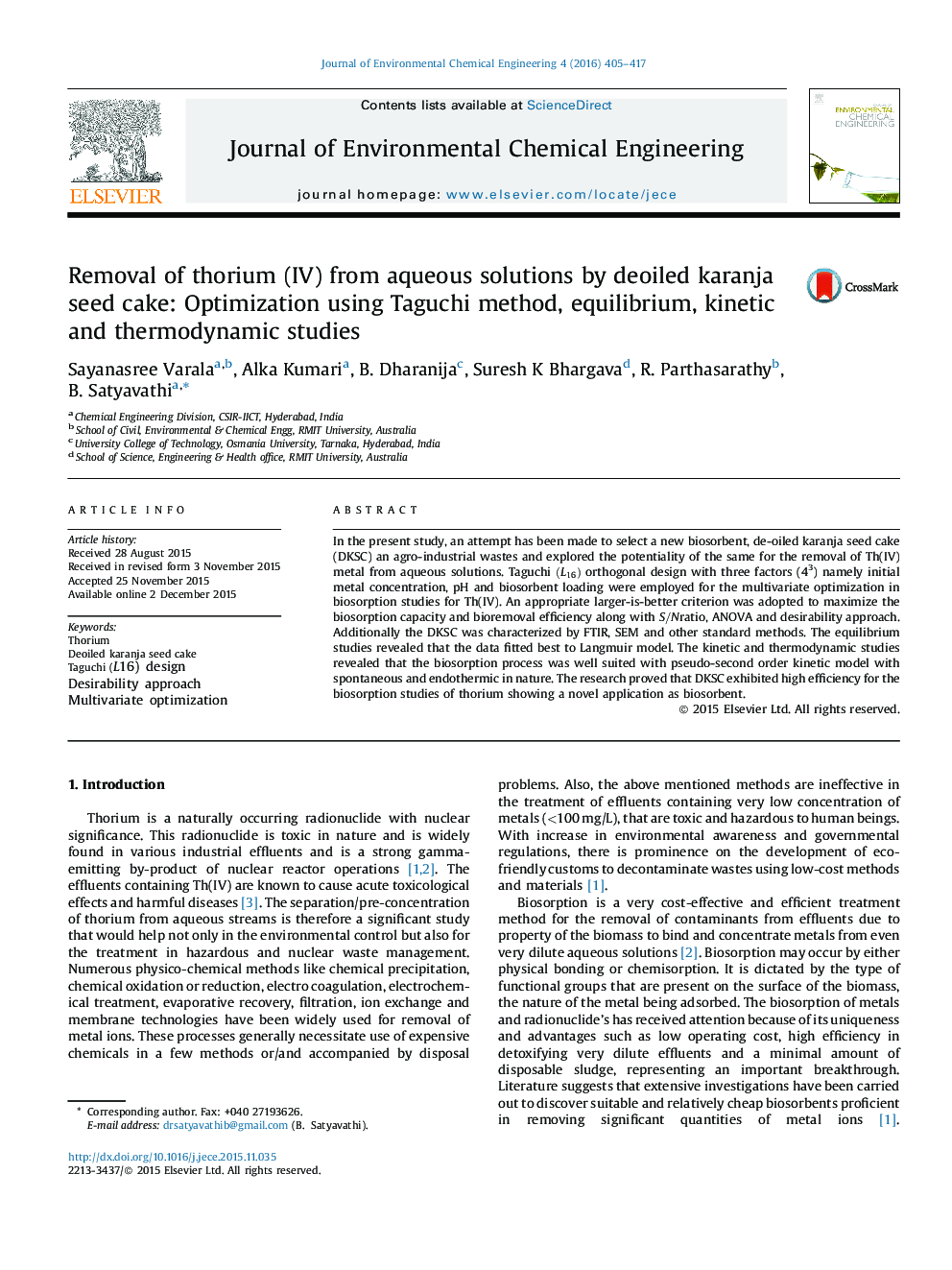| Article ID | Journal | Published Year | Pages | File Type |
|---|---|---|---|---|
| 221896 | Journal of Environmental Chemical Engineering | 2016 | 13 Pages |
•Novel application of DKSC as biosorbent for removal of Th(IV) from aqueous streams.•Taguchi (L16)(L16) method for the optimization of effective range of process parameters.•Simultaneous optimization using desirability approach.•Biosorption process is endothermic in nature with pseudo second order rate.
In the present study, an attempt has been made to select a new biosorbent, de-oiled karanja seed cake (DKSC) an agro-industrial wastes and explored the potentiality of the same for the removal of Th(IV) metal from aqueous solutions. Taguchi (L16)(L16) orthogonal design with three factors (43) namely initial metal concentration, pH and biosorbent loading were employed for the multivariate optimization in biosorption studies for Th(IV). An appropriate larger-is-better criterion was adopted to maximize the biosorption capacity and bioremoval efficiency along with S/NS/Nratio, ANOVA and desirability approach. Additionally the DKSC was characterized by FTIR, SEM and other standard methods. The equilibrium studies revealed that the data fitted best to Langmuir model. The kinetic and thermodynamic studies revealed that the biosorption process was well suited with pseudo-second order kinetic model with spontaneous and endothermic in nature. The research proved that DKSC exhibited high efficiency for the biosorption studies of thorium showing a novel application as biosorbent.
